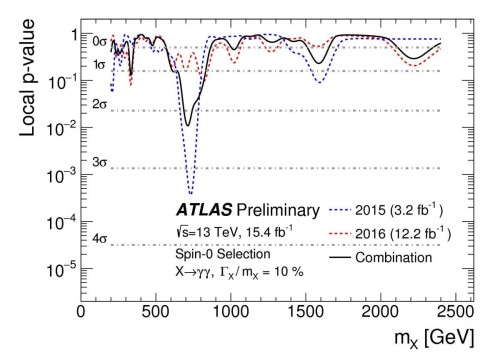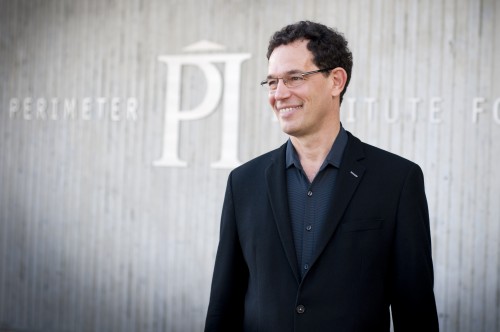Tag archives: supersymmetry
And so to bed for the 750 GeV bump

No bumps: ATLAS diphoton data – the solid black line shows the 2015 and 2016 data combined. (Courtesy: ATLAS Experiment/CERN)
By Tushna Commissariat
After months of rumours, speculation and some 500 papers posted to the arXiv in an attempt to explain it, the ATLAS and CMS collaborations have confirmed that the small excess of diphoton events, or “bump”, at 750 GeV detected in their preliminary data is a mere statistical fluctuation that has disappeared in the light of more data. Most folks in the particle-physics community will have been unsurprised if a bit disappointed by today’s announcement at the International Conference on High Energy Physics (ICHEP) 2016, currently taking place in Chicago.
The story began around this time last year, soon after the LHC was rebooted and began its impressive 13 TeV run, when the ATLAS collaboration saw more events than expected around the 750 GeV mass window. This bump immediately caught the interest of physicists the world over, simply because there was a sniff of “new physics” around it, meaning that the Standard Model of particle physics did not predict the existence of a particle at that energy. But also, it was the first interesting data to emerge from the LHC after its momentous discovery of the Higgs boson in 2012 and if it had held, would have been one of the most exciting discoveries in modern particle physics.
Why converge?
By Louise Mayor in Waterloo, Canada
Right now, top physicists from around the world are arriving in Waterloo, Canada, to attend a unique conference. Christened Convergence, the meeting is the brainchild of Neil Turok, director of the Perimeter Institute for Theoretical Physics (PI) in Waterloo, where the event will be based. I spoke to Turok to find out what motivated him to set up this conference, what makes it so special, and what he hopes it will achieve.
Quantum landscaping

Artist’s impression of a map of the Quantum Universe (Graphic courtesy of “ILC — form one visual communication”)
By Tushna Commissariat
Here’s a bit of Friday physics fun… I came across this rather interesting image that shows an artist’s impression of a map entitled “The Quantum Universe”. It includes six landmasses all floating in the Big Bang Ocean; including Dark Matter Landmass, Sypersymmetry Reef, Higgs Island and the Land of Ultimate Unification as well as others.
So go ahead and tell us which island you would like to settle down on. Be sure to look carefully at gems like Newton’s Lawn and Mount Einstein before you make your mind up!
To see a larger hi-res image follow this link.
View all posts by this author | View this author's profile
